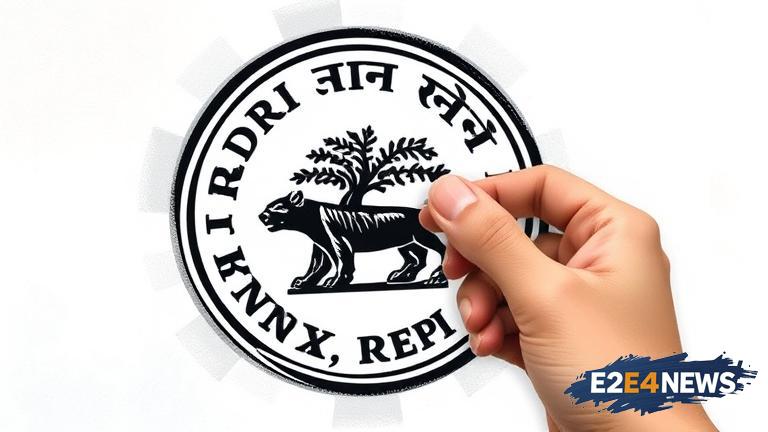The RBI’s VRRR auction, which was held to absorb excess liquidity from the financial system, has failed to meet its target, sparking concerns among market participants. This is the second consecutive auction to fall short, with the previous one also failing to attract sufficient bids. The RBI had announced a total amount of Rs 2 lakh crore for the three-day auction, but the actual bids received were significantly lower. The shortfall in the auction has raised questions about the effectiveness of the RBI’s liquidity management tools. The VRRR auction is a key instrument used by the RBI to manage liquidity in the financial system, and a shortfall in the auction can have implications for interest rates and the overall economy. The RBI has been using the VRRR auction to absorb excess liquidity from the financial system, which has been a major concern in recent months. The excess liquidity has been putting downward pressure on interest rates, making it challenging for the RBI to achieve its monetary policy objectives. The shortfall in the VRRR auction has also sparked concerns about the RBI’s ability to manage liquidity in the financial system. Market participants are worried that the RBI may not be able to absorb excess liquidity, which could lead to a surge in inflation and undermine the country’s economic growth. The RBI has been facing challenges in managing liquidity in the financial system, and the shortfall in the VRRR auction is a major setback. The central bank has been using various tools, including the VRRR auction, to manage liquidity, but the results have been mixed. The RBI has also been using other instruments, such as the cash reserve ratio (CRR) and the statutory liquidity ratio (SLR), to manage liquidity, but the effectiveness of these tools has been limited. The shortfall in the VRRR auction has also raised questions about the RBI’s communication strategy, with some market participants expressing concerns that the central bank’s messaging has been unclear. The RBI has been trying to balance its monetary policy objectives with the need to manage liquidity in the financial system, but the task has been challenging. The central bank has been facing pressure from various stakeholders, including the government, to keep interest rates low, while also ensuring that inflation remains under control. The RBI’s ability to manage liquidity in the financial system will be closely watched in the coming days, and any further shortfalls in the VRRR auction could have significant implications for the economy. The RBI is expected to take further measures to manage liquidity, including adjusting the CRR and SLR, and using other instruments to absorb excess liquidity. The central bank’s actions will be closely watched by market participants, and any mistakes could have far-reaching consequences for the economy.
